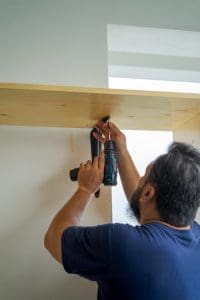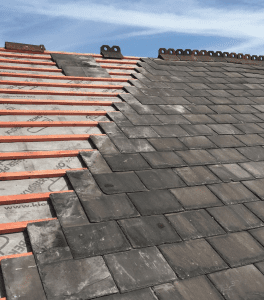Roofs are one of the most critical components of any building, providing protection from the elements and keeping your home or business secure. Regular roof inspections are essential to ensure your roof remains in good condition, as even minor damage can lead to more significant problems if left unchecked. But how often should you inspect your roof, and what does a thorough inspection involve?
At 3D Construction, we understand the importance of maintaining your roof and have compiled this detailed guide to help you stay on top of roof care. Whether you have a slate, tile, flat, or heritage roof, this guide will explain how often your roof should be inspected and what a proper inspection involves.
What Does a Roof Inspection Include?
A roof inspection involves several key steps to ensure all aspects of the roof are checked for potential damage or wear. Below are the standard components of a thorough roof inspection:
- Interior Inspection:
- The first step in a roof inspection often begins inside the building. This includes checking for signs of leaks, water stains, mould, or sagging in the ceiling. These are indicators that there may be underlying problems with the roof that need attention.
- Exterior Inspection:
- The exterior inspection involves examining the roof’s surface for any visible damage, such as missing or cracked tiles, damaged shingles, or signs of wear. This part of the inspection helps identify areas where repairs or replacements may be needed.
- Flashing and Seal Inspection:
- Flashing refers to the material used to seal joints in the roof, such as around chimneys or skylights. It is crucial to check for loose or damaged flashing, as this is often a common point of failure where water can seep in.
- Drainage System Inspection:
- A roof’s drainage system, including gutters and downpipes, plays a significant role in directing water away from the building. Inspecting the drainage system ensures there are no blockages or damage that could lead to water pooling on the roof or around the foundation of the property.
Why Hire a Professional for Roof Inspections?
While it’s possible to conduct a roof inspection yourself, it is always advisable to hire a professional roofer. A trained expert from 3D Construction will have the knowledge, experience, and tools necessary to thoroughly inspect your roof and identify any issues that might not be immediately obvious to an untrained eye. Additionally, professional roofers can perform the inspection safely, particularly if the roof is difficult to access or has a steep pitch.
What Are Common Issues Found During a Roof Inspection?
During a roof inspection, various types of damage or potential problems may be uncovered. These include:
- Missing or Broken Tiles/Shingles: A common issue on tiled roofs, this can lead to leaks and further deterioration if not addressed promptly.
- Damaged Flashing: As flashing seals joints and seams, any damage can compromise the roof’s ability to keep water out.
- Sagging Areas: If parts of the roof structure are sagging, it indicates structural damage that requires immediate attention.
- Clogged Gutters: Blocked gutters can prevent proper drainage and cause water to pool on the roof, which can lead to leaks and water damage.
- Moss and Algae Growth: While moss and algae may seem like a cosmetic issue, they can hold moisture against the roof, leading to deterioration over time.
How Often Should You Inspect Your Roof?
The frequency of roof inspections depends on the type of roof you have, the age of the building, and the local climate. Below is a breakdown of how often different types of roofs should be inspected.
Slate Roofs:
Slate roofs are known for their durability and longevity, often lasting over a century with proper care. However, this doesn’t mean they’re maintenance-free. Slate roofs should be inspected at least once a year, typically before the winter months. The cold, wet weather can exacerbate minor issues, so it’s best to catch them early.
In some cases, more frequent inspections may be necessary, particularly if the slate roof is old or if the property is located in an area with extreme weather conditions. Regular checks will ensure any cracked or slipped slates are identified and repaired before they lead to more significant problems.
Tile Roofs:
Tile roofs, like slate, typically require an annual inspection. The most critical time for these inspections is before autumn and winter, when the weather starts to turn colder. Tile roofs can suffer from cracks, chips, or loose tiles, which can allow water to penetrate the roof and cause damage.
If your tile roof is particularly old, or if you live in an area that experiences harsh weather conditions like high winds or heavy rainfall, it may be wise to inspect the roof more frequently, perhaps twice a year, to ensure it remains in good condition.
Flat Roofs:
Flat roofs generally require more frequent inspections than pitched roofs because of their horizontal design. Water tends to pool on flat roofs if the drainage system isn’t working correctly, leading to leaks and water damage.
It’s recommended that flat roofs be inspected twice a year—once before winter to ensure the roof is prepared for harsher weather, and once after winter to check for any damage caused by cold temperatures, snow, or ice. Regular inspections can help catch problems early, preventing expensive repairs in the future.
Heritage Roofs:
Heritage roofs, often found on listed buildings or older properties, require special attention. These roofs often use traditional materials and construction techniques, which may require more specialised care.
While one inspection per year is the minimum requirement, heritage roofs may need more frequent checks depending on their age and the specific requirements of the building. A professional with experience in heritage properties should always carry out these inspections to ensure the roof’s historical integrity is maintained while keeping it in good condition.
Final Thoughts on Roof Inspections
Regular roof inspections are an essential part of maintaining your property, whether it’s a home or business. By scheduling annual or bi-annual checks, you can ensure that any potential issues are identified and addressed before they lead to more extensive and costly repairs.
The key takeaway is that the frequency of roof inspections depends on the type of roof, the age of the building, and local weather conditions. For example, flat roofs generally require more frequent inspections than pitched roofs due to their design. Similarly, older properties or those located in areas with extreme weather may need more regular attention.
If you’re unsure about how often you should inspect your roof, or if you need help with a professional inspection, 3D Construction is here to assist. Our team of experts is experienced in inspecting and maintaining all types of roofs, from slate and tile to flat and heritage roofs.
Need a Professional Roof Inspection? Contact 3D Construction Today
At 3D Construction, we are committed to providing top-quality roofing services. Whether you need a routine inspection or repairs for damage discovered during an inspection, our skilled professionals are here to help.
Don’t wait until a small issue becomes a major problem. Contact us today to schedule your roof inspection and keep your property in excellent condition all year round. You can reach us by calling 07432 342462 or emailing info@3dhomeconstruction.co.uk. Let us help you protect your home or business with expert roofing care.




